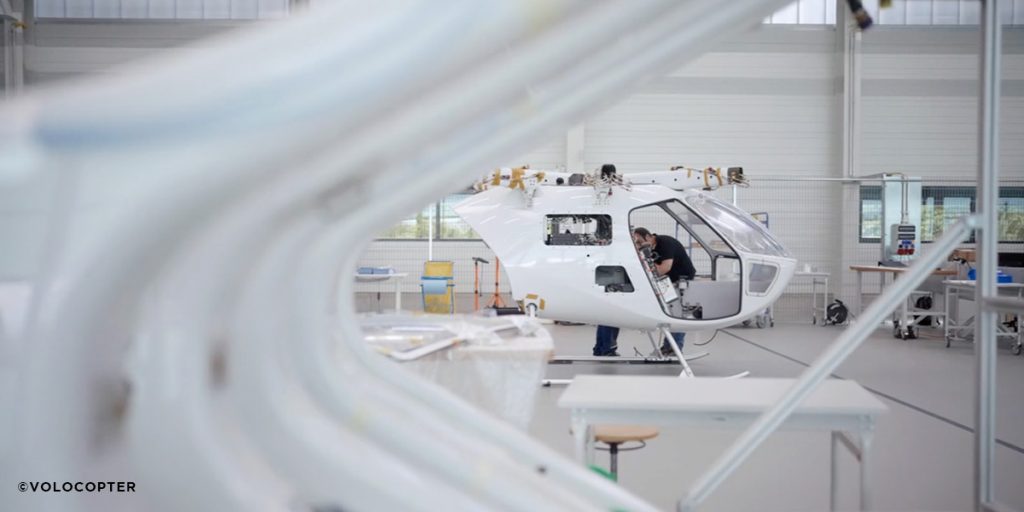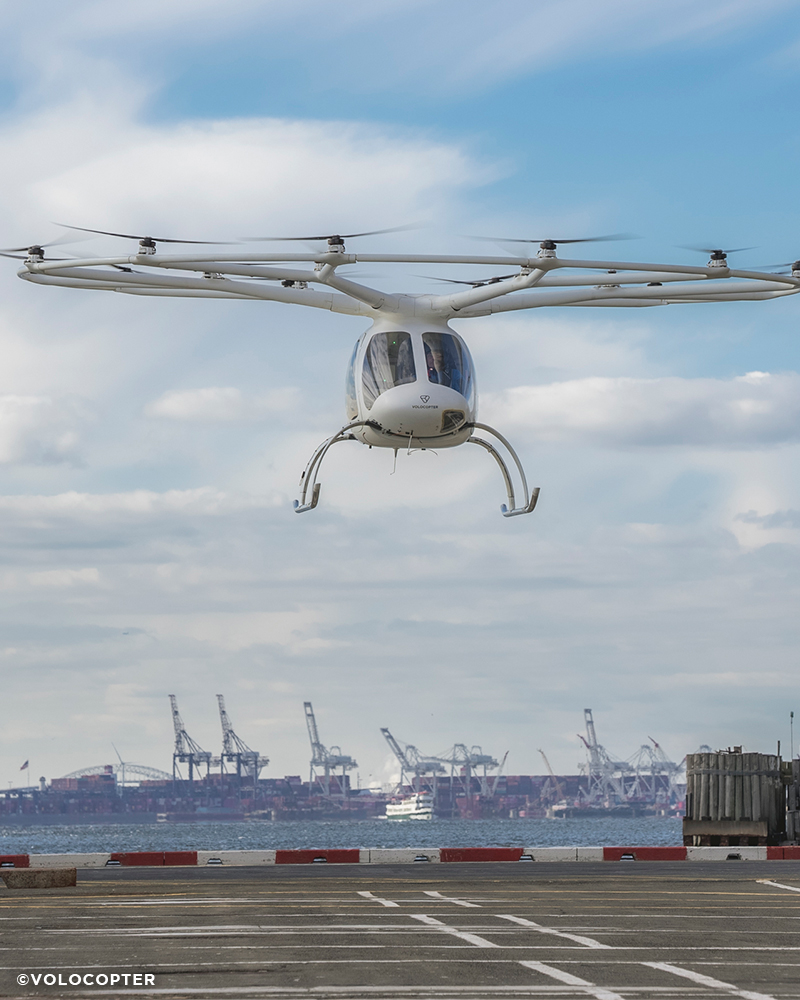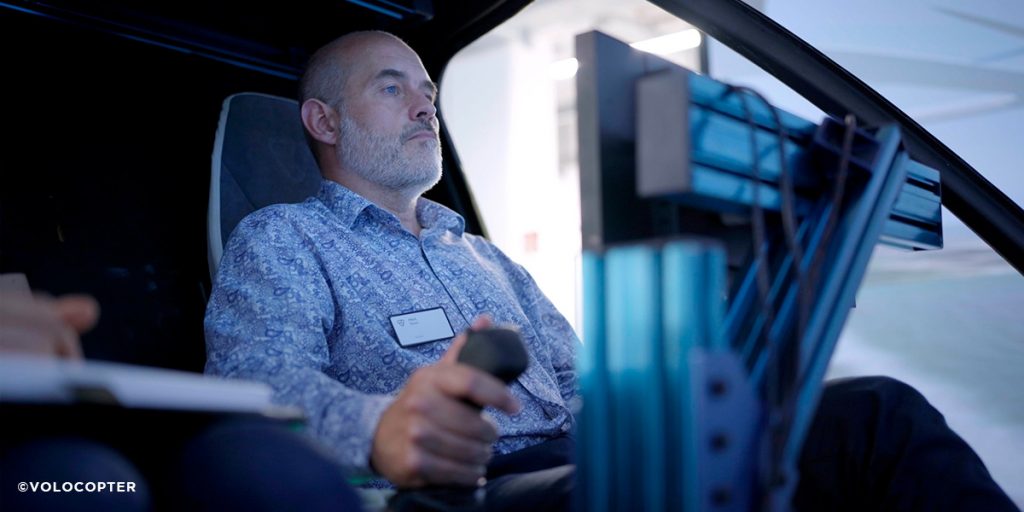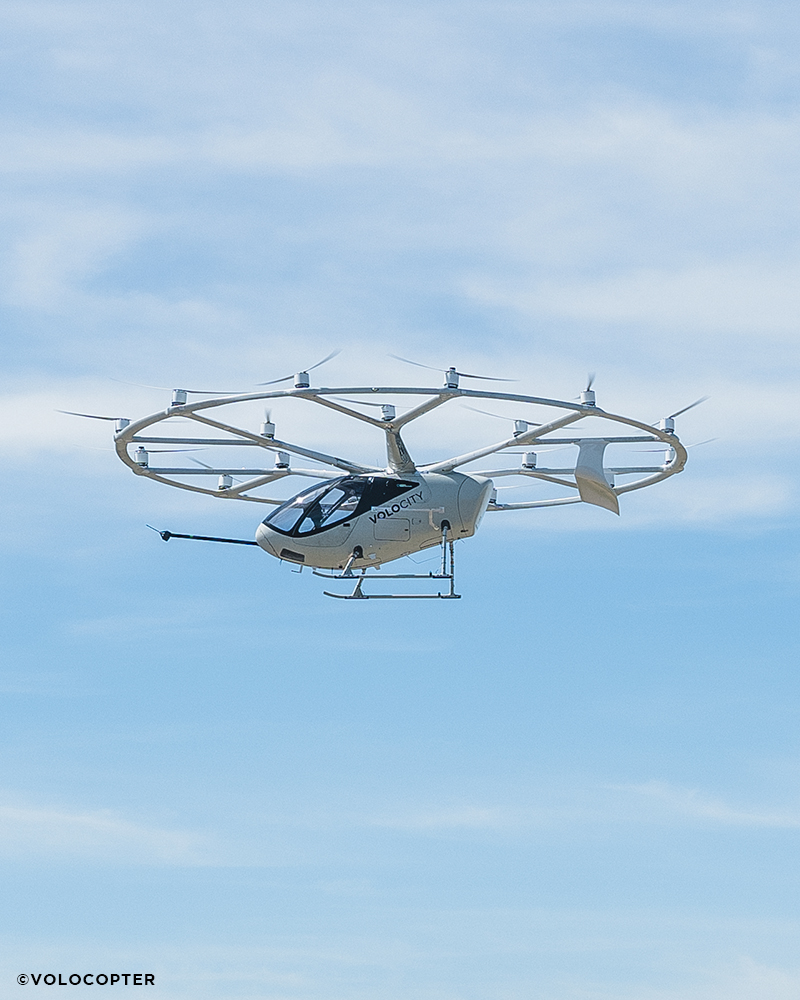Although it sounds like science fiction, it could be imminent: going from one side of the city to the other by air is another alternative to take into account among the many urban transportation options. The future, if you’ll forgive the cliché, is already here. At least, that is what the people behind one of these elements of change say. Volocopter, a company that designs flying devices with the possibility of carrying passengers, has been on this path for more than a decade, hoping to change the way we move around.
This company, as they explain to On The Road Trends from their headquarters, “plans to provide an alternative method of sustainable urban air transportation in cities.” “We are particularly targeting the large and congested cities of the world, where land transport has exceeded its capacity. Thanks to our high safety standards, we will be able to fly where helicopters are currently prohibited; we will not pollute the air or cause additional noise pollution in cities because our planes are super quiet,” they point out with conviction.
“Our goal is also to provide an efficient end-to-end customer journey, through our digital platform, VoloIQ. This will connect people, aircraft, vertiport locations, maintenance, etc. so that we have data at our disposal to move aircraft where necessary,” they add.
Their intentions are firm. And they have already conducted trials. But first it would be necessary to explain what this project is about. Volocopter is an eVTOL (acronym for electric vertical take-off and landing vehicles). The goal they have set in 2024 is to offer a flying taxi service for the Paris Olympic Games, which will be held in July and August. That is what they announced at the Paris Air Forum held three years ago in the French capital.
They offered a demonstration of the operation of the Volocopter 2X model at Le Bourget airport. The test flight lasted three minutes and covered about 500 meters at an altitude of 30 meters, with a speed of 30 km/h. The vehicle was empty and was controlled remotely. The idea of this type of eVTOL, in any case, is to transport two passengers with luggage. And the procedures to carry out a planned route were already being handled with the French Civil Aviation Authority to do it safely.
Today, three years later, the effort continues in this company founded in 2011. “The three founders were fascinated by toy drones and the advancement of technology to fly in very stable conditions and at the same time be agile in movement. They came together to create the first multicopter capable of human flight. The Guinness Book of Records credits us as the first ‘manned multicopter’, they say.


Volocopter has more than 150 employees in its German offices in Bruchsal, Munich and Singapore. There have already been several generations of flying taxis equipped with a system that allows them to be sustainable. In addition, the safety of the vehicle, especially during landing, is guaranteed by the design, they point out. And it stands out for its low noise level: in operation, this eVTOL emits a sound similar to a hum, imperceptible at a height of 100 meters.
“The VoloCity, our company’s air taxi, is not a helicopter,” they point out. “We are electric, we have 18 motors and rotors, we use drone technology, etc. We are in the process of certifying this aircraft with the European Union Aviation Safety Authority (EASA) to offer it commercially as soon as possible this year. The VoloCity will have the highest safety standards, like any Airbus aircraft seen in the skies today,” they tell us.
As stated, this eVTOL reaches a speed of more than 110 km/h, with a range of at least 35 kilometers, and combines unprecedented technological results with maximum comfort for the user. According to media statements by Florian Reuter, CEO of the company, these vehicles “have been studied and designed for urban services. Currently, on average one or two people travel in taxis or Ubers at a time. So this is the perfect vehicle to get around the city. It is quiet, safe and offers a fantastic experience.”


“We want to integrate it on a large scale with other modes of transport and make it accessible to everyone,” he explained. This objective is common in the market. Major automakers—from Stellantis to Toyota and Hyundai to global mobility operators like Uber and AirBus—have already looked at this, even though it means creating a more complete operating environment, including the physical infrastructure for takeoff and landing or integration into city air traffic management systems.
It is an increasingly plausible reality. According to the report The Future of Vertical Mobility, prepared by Porsche Consulting, approximately 23,000 eVTOLs intended for passenger transportation will circulate in metropolises around the world in 2035. Hundreds of thousands of electric drones would be added to merchandise deliveries, precision agriculture, searching for people or transporting emergency drugs. All this would generate a global market for the sector valued at $74 billion (about €69 billion).
Volocopter believes that the potential of the sector would reach up to $300,000 million (€280,000 million), although they prefer not to provide data on the investment made up to this point or what it would cost to use it. Porsche Consulting’s calculations, however, estimate that eVTOLs will be advantageous compared to cars only for journeys longer than 20 or 25 kilometers.
That is, they would be especially suitable for traveling from airports to the takeoff and landing hubs that will be built in large cities. “Electric aviation is not the future: it is already here and now,” the company states. “We will start small, but once we grow, this will be the safest mode of transportation. It does not cause pollution and will help with the decarbonization of the aviation industry,” they argue. It will also be a service “for the use of everyone.” “The way people use it will be different between cities and regions (just as happens with cars and different models), but electric aviation will become the norm in the next decade,” they claim at Volocopter.